
MENUMENU
TALK TO AN EXPERT
Special Hours: 7AM – 6PM PST
TALK TO AN EXPERT
Special Hours: 7AM – 6PM PST
A shunt, or shunt resistor, is integral in many electrical systems — especially those with battery monitors. They allow you to accurately measure the electrical current in real-time, enabling your monitoring system to do its job. But how exactly does a shunt work? And why is it so important to measure electrical current? In this article, we answer these questions and more as we take a deep dive into everything you need to know about electrical shunts. Let’s dig in.
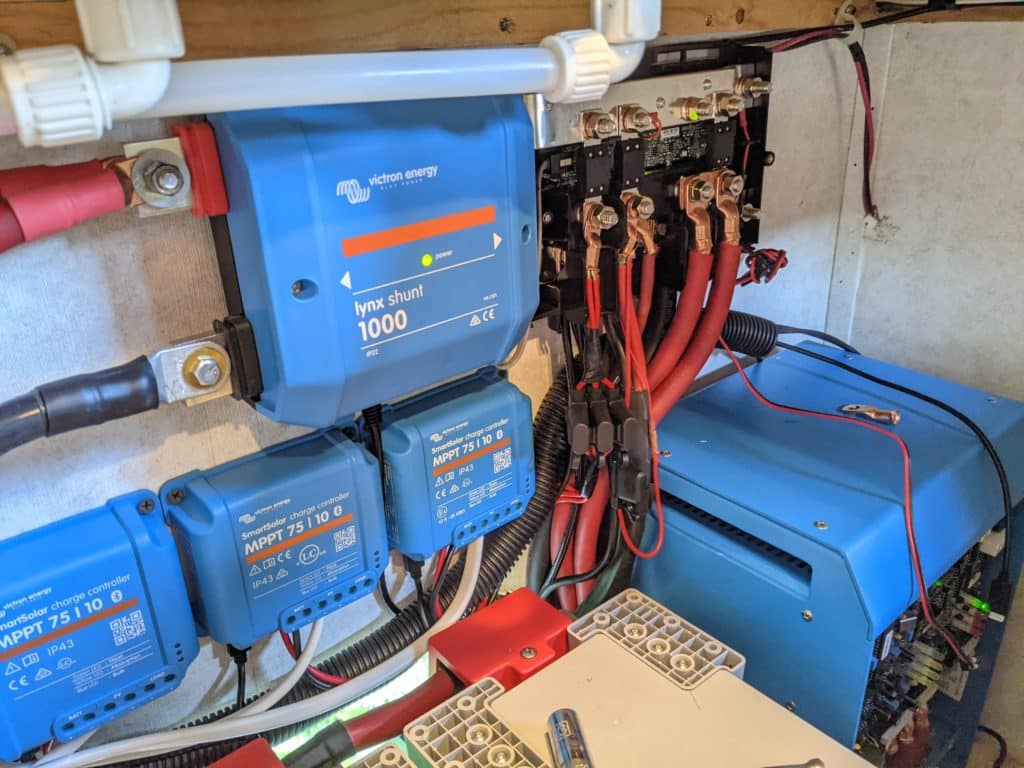
The term “shunt” refers to different applications in electrical systems but generally refers to a device that passes electrical current around another device. Most often, shunts measure the electric current (measured in amps), both alternating and direct. These typically come in the form of an ammeter, which measures the voltage drop across a low impedance resistor.
For the rest of this article, we will be focusing on shunts used in battery systems for the purpose of monitoring. For battery systems, shunts are usually built into the negative side of a battery terminal to allow the battery monitor to display the current coming from your batteries accurately.
Shunts mainly monitor the energy that flows out of a battery. However, they can serve many purposes when it comes to measuring an electrical current. Most battery monitors require a shunt on the negative side of the battery terminal. It then measures the real-time voltage of the system and the current draw. This allows the monitor to calculate the charge, remaining energy, and electricity consumption to display the information accurately.
→ Check out our selection of recommended Battery Monitors.
When we talk about “shunting” wires, we’re generally referring to placing a device in the path of an electrical current. This creates a low-resistance tunnel in order to allow the current to flow to a different point. This is a frequently used term by electricians and electrical engineers to describe a particular wiring style.
Many times shunted wires are then used as a measuring device by knowing the resistance of a shunt. A measuring device can determine the voltage drop across the shunt and calculate the current. Hence why they’re called “shunt resistors.” In fact, the word “shunt” means “to divert” or “to turn off to one side.”
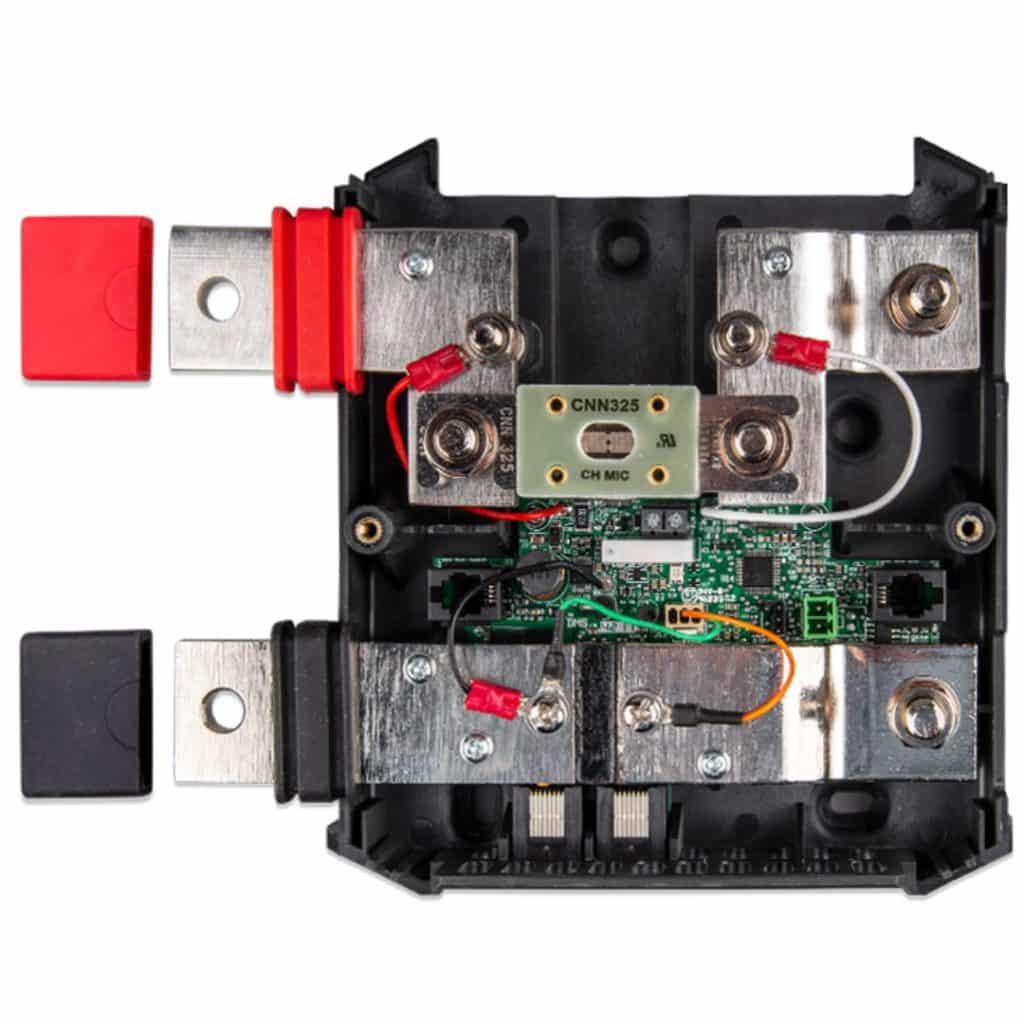
Shunts are extremely useful because they allow us to measure the current in real-time. This makes them especially important when it comes to battery monitors. After all, you need to know if your battery is reaching a certain discharge as it’s happening and not after your battery has become too low. This is the difference between a voltage-based monitor and a shunt-based monitor. Shunts provide a much higher degree of accuracy.

Many shunts can connect to the battery monitor’s auxiliary screen via a small wire. However, technological advances have allowed many battery monitor manufacturers to create systems that communicate with one another via Bluetooth.
For example, Victron Energy sells a product called “SmartShunt.” It connects to your batteries and then sends the information through Bluetooth to your smartphone or tablet. Thus, rather than having an auxiliary screen, you can access all your battery monitor information through an app on your device.
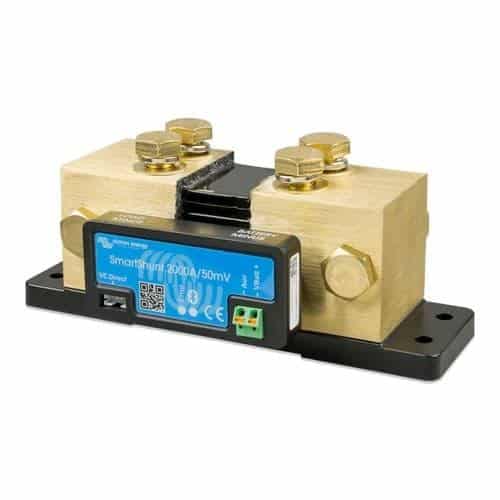
As we mentioned before, most shunts sit on the negative lead near the batteries. This is because the shunt needs to record all of the currents flowing in and out of the batteries before it branches off into other circuits. This allows the shunt to measure the battery’s capacity accurately. Essentially, any electrical current you want to measure must flow through the shunt for the battery monitor to read it correctly.
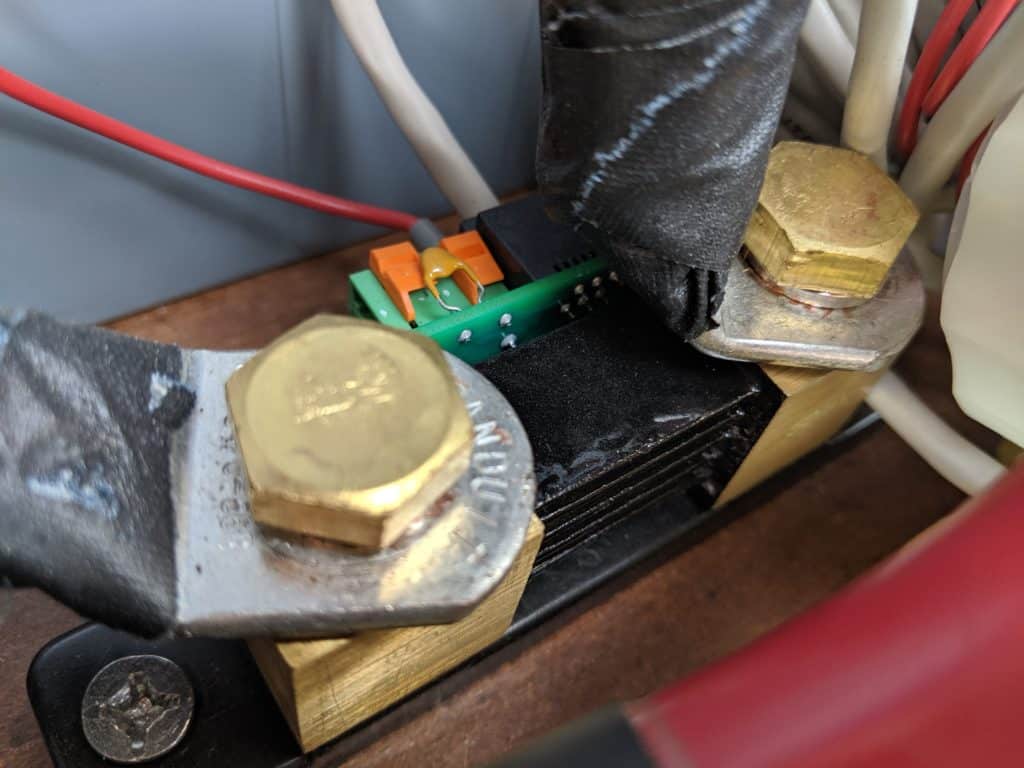
If using a shunt to measure battery capacity it’s best to be close to the battery. This is because it needs to have an accurate battery voltage sensor and must include all power into and out of the batteries. Nothing can be connected to the batteries directly beside the shunt on the negative lead or it will not measure correctly.
Other shunt usage doesn’t necessarily have to be installed close to the battery bank. Really, it can sit anywhere you need to measure the electrical current. Examples of common places where people place shunts include alternators in vehicles, solar panels, wind turbines, etc. The whole point is to calculate the current flowing out of a certain electrical system.
When matching your battery monitor with a correctly-sized shunt, it’s important to consider their ampacity ratings and voltage calibration. Essentially, these ratings should match one another to make sure both can handle and accurately measure the currents running through them. For example, a 50 Amp/50mV monitor requires a 50 Amp shunt, whereas a 200 Amp/50mV requires a 200 Amp shunt.
If you undersize your shunt it can be dangerous as the shunt could get hot or even melt. This is why proper fusing is important so you cannot overload the shunt.
A shunt experiencing a full load may get a bit warm, but that’s about it. Thus, you don’t have to worry about it becoming so hot that it will damage any surrounding wires. If you decide to enclose it, you should ensure there’s enough room around it for some airflow. However, it will likely stay the same temperature as the wires around it.
An undersized shunt passing more current than it’s rated for can get hot or even melt in worst-case scenarios. Be sure you always fuse a battery lower than the rating of the shunt to prevent this.
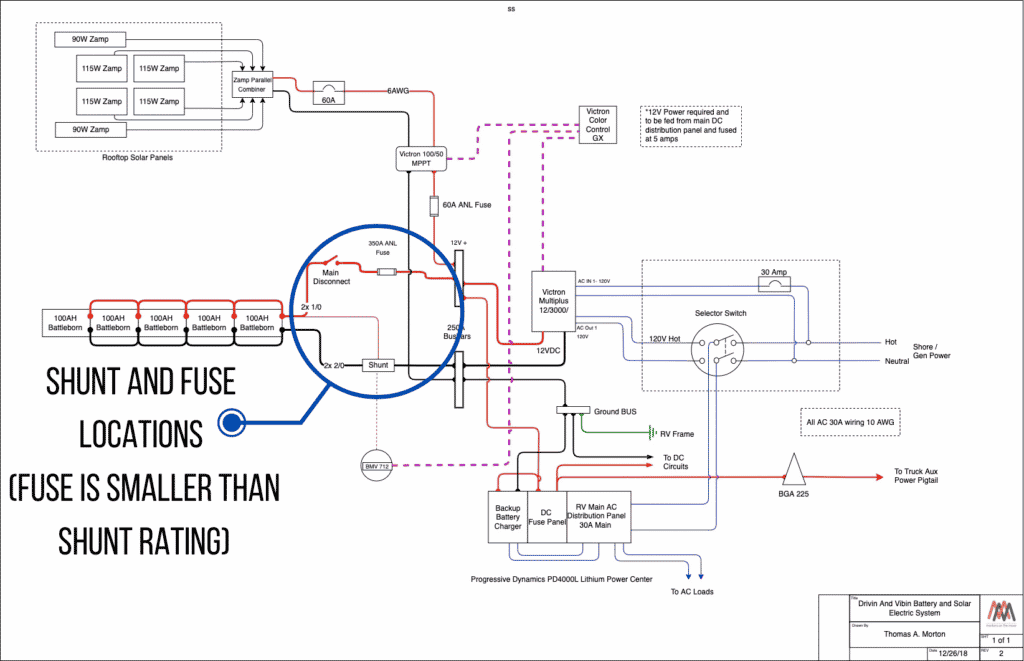
Shunts allow us to accurately measure the electrical current running through a wire at any given moment. Because they measure the actual energy current (rather than just the volts, which can vary depending on other factors such as heat), they’re an essential component of a battery monitor.
Likewise, battery monitors are basically useless without a proper shunt. And without a battery monitor, you couldn’t gauge the charge status of your batteries, battery voltage, battery temperature, and current power consumption. In a nutshell, they give us complete control over our electrical systems so we can get the most out of our batteries!
Do you have any questions about electrical shunts? Drop them in the comments below!
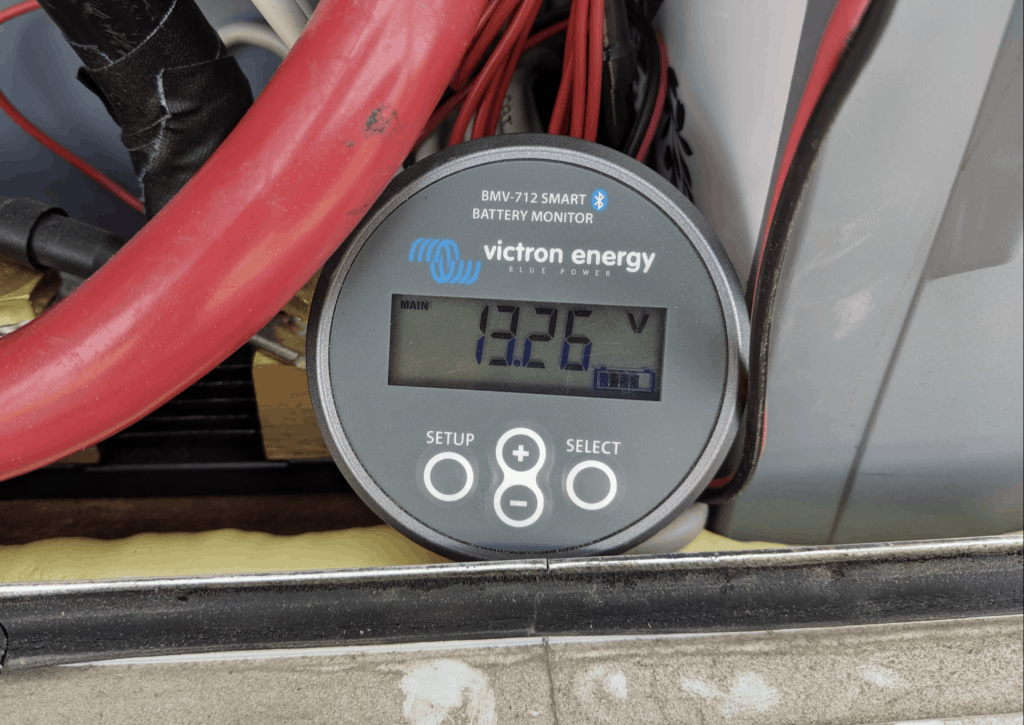
We know that building or upgrading an electrical system can be overwhelming, so we’re here to help. Our Reno, Nevada-based sales and customer service team is standing by at (855) 292-2831 to take your questions!
Also, join us on Facebook, Instagram, and YouTube to learn more about how lithium battery systems can power your lifestyle, see how others have built their systems, and gain the confidence to get out there and stay out there.
Shop Best Sellers

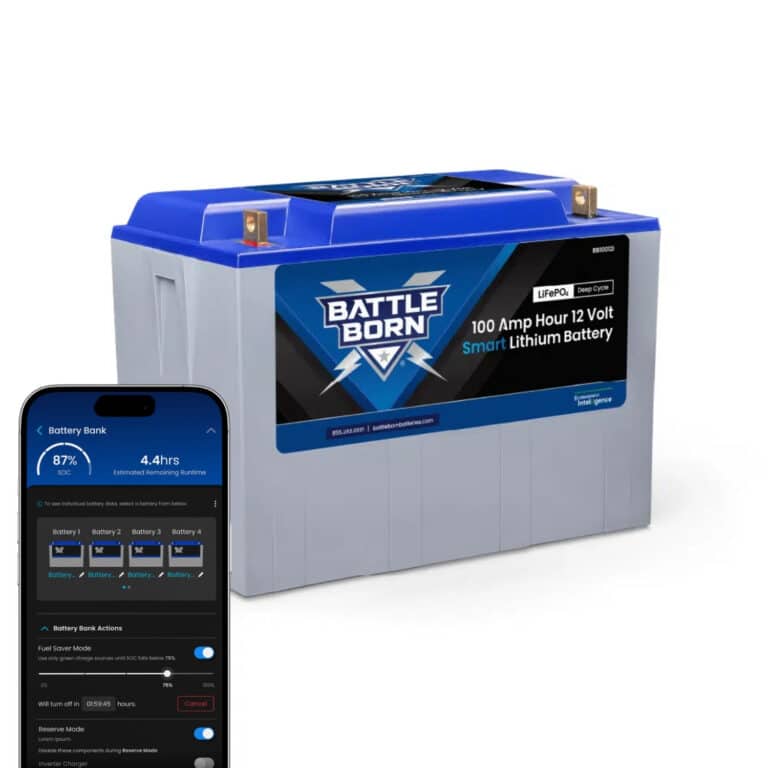
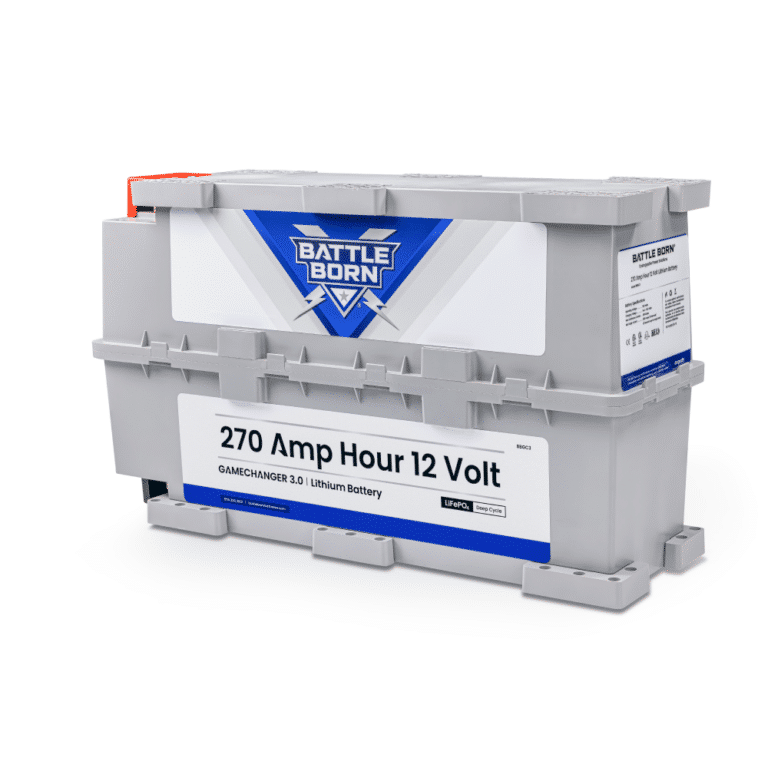
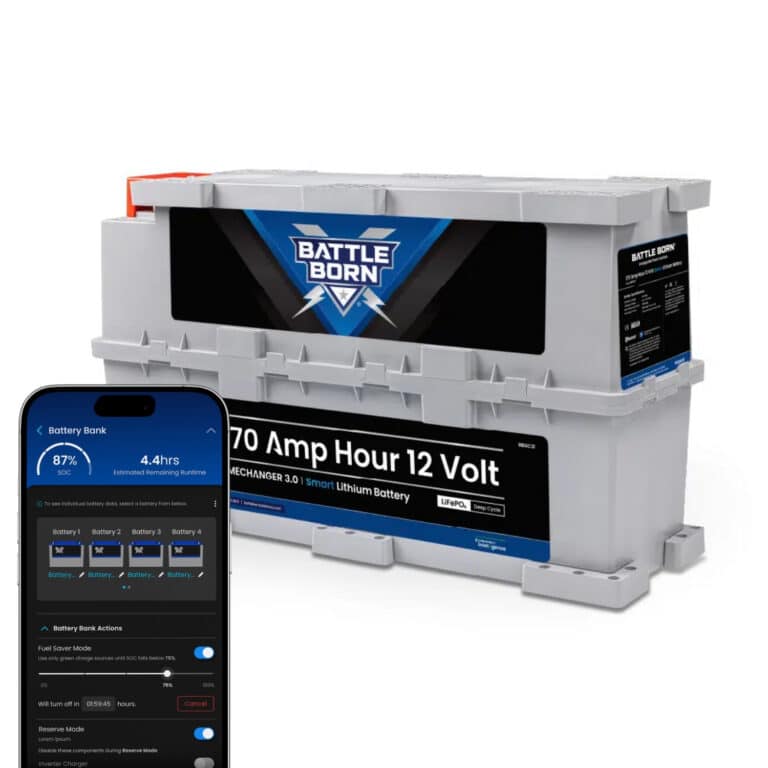
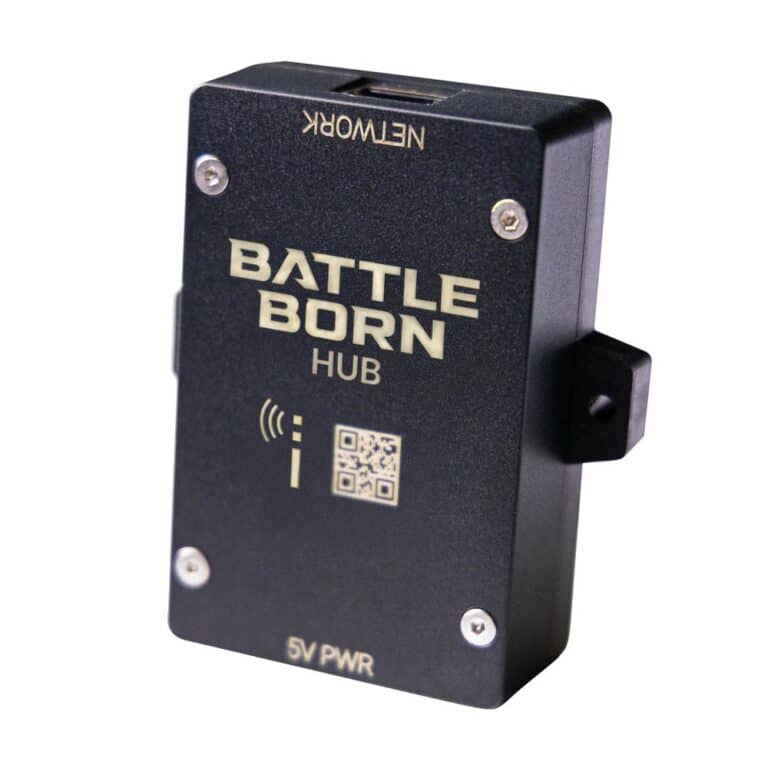
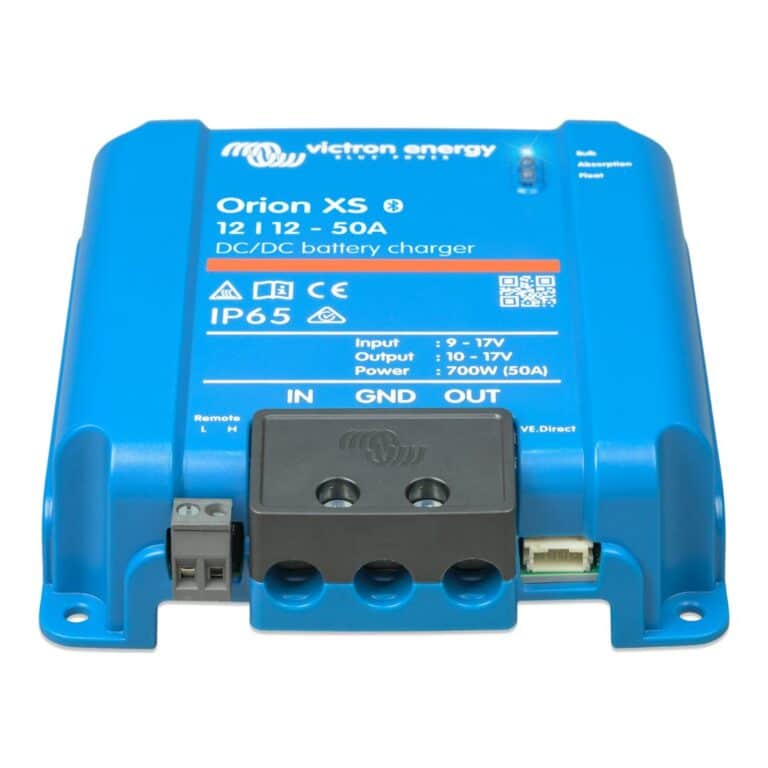
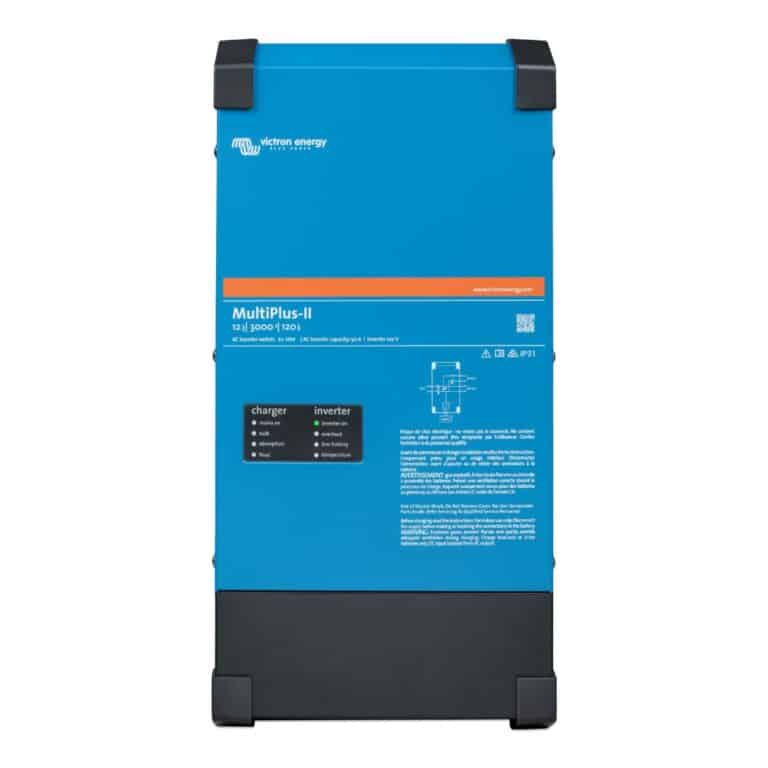

Ask a technical specialist now at 855.292.2831
Stay in the Know
5 thoughts on “What Is a Shunt Used for in Electrical Systems?”
I am considering buying a 40 year old 46 foot classic sailboat and need to upgrade most of the power and electronics.
Good to know 👍
Are there any safe economical shunt and monitors that are certified safe?
I have a brand new airstream Basecamp 16 with the Battleborn battery system and solar cells.
What shunt and monitor should I purchase for this setup?
Thanks so much
Check out these system monitoring options: https://battlebornbatteries.com/shop/products/system-monitoring/